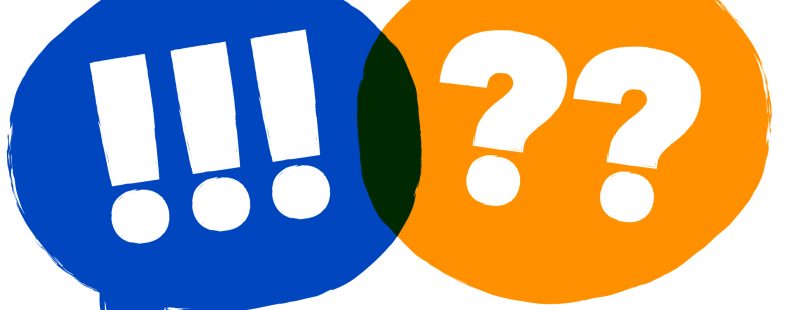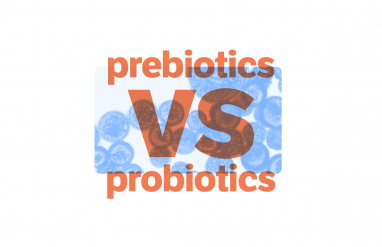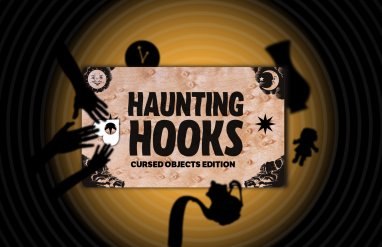by Laura Vismara
Content warning: This article deals with the sensitive topic of suicide. If you (or someone you know) need support, call the toll-free, 24/7 National Suicide Prevention Lifeline at 1-800-273-8255. You can also text HOME to 741741 for free, which offers 24/7 support from the Crisis Text Line.
This article also covers a range of difficult topics on mental health, including eating disorders and substance use disorders, that might be upsetting to some readers.
According to the National Alliance of Mental Illness (NAMI), one in 5 US adults faces the reality of living with a mental health condition, every year. One in 25 has a serious mental disorder—defined as one that severely interferes with the ability to carry out daily life—and one in 12 has a substance use disorder.
Year-round, and especially in May, known as Mental Health Awareness Month, it is important to reflect on these statistics and consider the way we talk about mental health in general and specific disorders. Though medicine has come far in providing services and effective strategies for recovery, there is work we can all do in advocating for and promoting acceptance of those who have mental disorders, as well as increasing awareness of and striving to end the stigma that still surrounds mental health.
This glossary of terms related to mental illness will provide correct terms and usage tips so that you can respectfully and knowledgeably discuss mental health disorders. This list isn’t exhaustive by any means, and with time, these terms may evolve and vary in their actual use among different settings or communities.
Challenging the mental health stigma
According to the American Psychiatric Association, approximately half of those with a mental illness don’t receive the help they need. Many find it difficult to seek help because they fear stigmatization. Experts say that although talking about mental health might not be easy, it’s essential. Open dialogues support those who live with a condition, while also helping dispel false ideas and prejudices.
Unfortunately, because the language of mental health has spread widely into our everyday vocabulary, this terminology may be used, misused, and thrown around casually in potentially damaging ways. And sometimes the problem isn’t that we’re using the wrong words, or we are using them in ways we shouldn’t, but that we’re not talking at all.
While public attitudes towards mental health are improving—with growing commitments among communities, workplaces, schools, and within governments—discrimination is still a reality. Many people living with mental health conditions will experience it, even after the condition itself is a distant memory.
Misconceptions are deep-seated in our society, preventing people from seeking further help and getting in the way of a constructive public dialogue. So, how can we talk about mental health responsibly and effectively?
There are four keys to a more inclusive language:
- Educate yourself and know the facts.
- Be specific. Whenever possible, use diagnostic terms to name and discuss conditions.
- Be mindful. Try to avoid hurtful and insensitive words that may upset or even trigger others.
- Opt for person-first language, that is language that separates a person from the condition. An illness need not define a person and a person is not a diagnosis. Saying has schizophrenia instead of is schizophrenic makes a huge difference. Put the person first, not the illness—unless they prefer differently. Always honor and respect the individual.
- Last but not least, educate others, pass on facts, and be the first to debunk stereotypes, and challenge myths and misbeliefs.
If you’d like to learn more about how you can help stop the stigma around mental illness, visit The National Alliance on Mental Illness (NAMI).
🔑 Key message about mental illness language
According to the American Psychiatric Association, approximately half of those with a mental illness don’t receive the help they need. Many find it difficult to seek help because they fear stigmatization. Experts say that although talking about mental health might not be easy, it’s essential. Open dialogues support those who live with a condition, while also helping dispel false ideas and prejudices.
Challenging the stigma associated with mental disorders requires education about the language of mental health and using inclusive terms. Most experts agree that it is best to use the language that a person or group prefers to refer to their own mental health status. Politely ask which language someone prefers before making a choice on which terms to use.
Glossary of terms
While the terminology and its usage are continuously evolving, the guidelines and list of terms we have collected here reflect the language preferred by mental health professionals and specialists. It is by no means an exhaustive list. Still, it should give you the confidence to approach and handle uncomfortable but necessary conversations.
Mental health vs. mental illness
The difference between the terms mental health and mental illness isn’t clear to many, and the two terms are often used as if they mean the same thing—except they don’t. In short, everyone has degrees of mental health, and everyone will experience forms of a mental health issue, problem, or concern at some stage in life. But not everyone will experience, clinically speaking, mental illness.
Mental health
Mental health is the “psychological well-being and satisfactory adjustment to society and to the ordinary demands of life.” The World Health Organisation further describes it as “a state of well-being in which every individual realizes his or her own potential, can cope with the normal stresses of life, can work productively and fruitfully, and can contribute to her or his community.”
In everyday terms, mental health is about living a balanced life, coping with its ups and downs, while keeping a positive attitude and frame of mind, and functioning to the best of your ability, emotionally, cognitively, and socially. It’s more than just the absence of mental illness, but it doesn’t mean that a person is happy all the time.
In fact, mental health problems, issues, or concerns can be experienced temporarily and as a reaction to the stresses of life by anyone, particularly when going through some major event or significant change, even the good ones, like a new job or the birth of a child.
These problems, issues, or concerns should be addressed and dealt with adequately as they do interfere with how you think, feel, and behave on a daily basis, even if to a much lesser extent than a mental illness.
Usage note: mental wellness or mental health and wellness are increasingly spreading as alternatives to mental health, pointing to and advocating for a more holistic approach to the matter. Issues, concerns, and problems can be used interchangeably when talking about mental health conditions that are temporary and do not fall into the category of serious mental illnesses/disorders.
Mental illness
Mental illnesses—also referred to as mental disorders—are considered important health problems and, as such, are diagnosed according to standardized criteria, have to be assessed by trained professionals (typically through physical exams, lab tests, and psychological evaluations) and treated accordingly. They disrupt a person’s life, adversely impacting their emotional, physical and mental health and well being.
Having a mental illness doesn’t mean struggling all the time or for the rest of your life. People can and do recover from it and live a fulfilling life even when they do not recover completely. In fact, in most cases, symptoms can be effectively managed with a combination of medications and psychotherapy. Please consult your doctor for unique medical advice if you have questions regarding any of the conditions described here.
Usage note: mental illness and disorder are generic words. Make an effort and opt for diagnostic terms, whenever possible. Yet, avoid diagnostic terms to describe non-health issues, or to explain or, worse, make fun of others’ idiosyncrasies or even your own.
Disease vs. disorder
Determining whether mental illnesses are diseases or disorders has always been one of the major challenges faced by the committees of the DSM-5, the Diagnostic and Statistical Manual of Mental Disorders, published by the American Psychiatric Association.
Currently, disorder is often a more accurate term than disease, medically speaking, for many mental health matters.
Disease
A disease is a medical condition marked by three main factors:
- An established biological cause detectable by clinical tests
- A well-defined group of symptoms
- A consistent and observable change in anatomy
Diseases disrupt the body’s normal functioning and physiological processes, causing changes in anatomy. They have a clearly identifiable, biological cause behind them, such as viruses, bacteria, parasites, or toxins, among many others. They come with a specific set of signs and symptoms and cause observable changes in the body’s anatomy.
Disorder
A disorder is less well defined than a disease
- It doesn’t have a clearly identifiable biological cause
- It doesn’t have a well-defined group of symptoms
- It doesn’t necessarily cause changes in anatomy
Mental disorders are viewed as irregularities or interruptions of the normal functioning of the mind or body. They may be caused by a broad variety of factors, ranging from genetic predispositions and family history to other diseases, or traumatic life experiences. Regardless, they aren’t detected by laboratory tests in the same way diseases are. Signs and symptoms vary widely and overlap considerably. Take depression and anxiety, for instance: not only do they share the majority of symptoms, they also tend to co-occur in what is called comorbidity.
Usage note: when referring to someone who has mental disorders, try to stay away from terms and descriptions that suggest pity, like suffering from, victim of, or afflicted with. Instead, say has a history of, is being treated for, or lives with.
What’s the difference between anxiety and depression? Learn about them here.
Common mental health disorders
Nearly 300 different mental health disorders are listed and organized in broader categories in the DSM-5. Following is an overview of some of the most common categories.
For a thorough list of disorders, signs, symptoms, causes, and treatments, visit The National Institute of Mental Health (NIMH).
Anxiety disorders
Ranging from mild to moderate to severe, anxiety disorders affect approximately 30% of adults at some point in their lives. They are among the most common and most effectively treatable mental health disorders.
Conditions that fall into this wide category share a variety of signs and symptoms, frequently appearing as physical problems, from stomach pain, to back pain, headaches, and other unexplained aches and pains. The key feature—occurring consistently over a period of time and for no apparent reason—is anxiety, a persistent state of overwhelming emotional turmoil, often combined with an unsettling fear of future threats. Among them are generalized anxiety disorder (GAD), phobia-related disorders, panic disorder, and social anxiety disorder.
Usage note: consider avoiding insensitive words like crazy and insane. We often use them in casual conversation like filler words or to describe something cool that happened, something silly, wild, or even dangerous. Sometimes we use them to describe mental illness too. Words like these are actually a hurtful form of discriminatory language that is extremely damaging to our own mental health and to those who live with mental health conditions.
On the same note, avoid misusing diagnostic terms. The terms OCD and ADHD, which are no longer classified as anxiety disorders in the DMS-5, should not be used as synonyms for being distracted, obsessive, or disorganized. These words shouldn’t be used lightly. In fact, casual references like these to medical diagnoses are undermining and can be harmful to those who actually meet the criteria.
Did you have an anxiety attack or a panic attack? Learn how to tell them apart here.
Eating disorders
Eating disorders are complex and life-threatening, marked by challenged relationships with food and weight. Not always easy to spot and categorize, they can have deep psychological roots and have no single cause. Affecting people of all age groups, genders, and backgrounds worldwide, they generally require professional help.
Typical symptoms include compulsive tendencies around food; strict rules about dieting, body shape, and weight; anxiety and irritability around mealtimes; dysmorphia or distorted body image; and inappropriate compensatory behaviors—such as vomiting, over-exercising, and misuse of laxatives, diuretics, or other medications.
Episodes of binge eating, despite being regarded as distinctive features of bulimia nervosa, are common to most eating disorders. They’re described as brief periods or bouts of excessive eating, and they’re always accompanied by a feeling of complete lack of control over what or how much one is eating during the episode. Depending on the disorder, they can be followed by compensatory behaviors intended to prevent weight gain and keep the fear of it under control.
Two of the most well-known eating disorders are anorexia nervosa and bulimia nervosa.
Usage note: remember to use person-first language when referring to people living with an eating disorder (example: he has bulimia). Most of them tend to identify themselves with the disorder itself and words like anorexic, bulimic, or binge eater could inadvertently reinforce that belief. Also consider avoiding using terms surrounding eating disorders to describe everyday eating behaviors.
Psychotic disorders
Psychotic disorders are mental disorders defined by distorted awareness and thinking that change one’s sense of reality.
Those diagnosed with severe psychotic disorders may find it difficult to know what’s real and what’s not and stay in touch with reality. The hallmarks of psychotic disorders are hallucinations—or seeing images and hearing sounds or voices that are not real—and delusions, or fixed false beliefs and suspicions firmly held as true even when there is evidence to the contrary. Some viruses, brain injuries, extreme stress or trauma, and some forms of drug abuse may all play a role in the development of psychotic disorders.
Schizophrenia, schizoaffective disorder, substance-induced psychotic disorder, and delusional disorder are some of them.
Usage note: avoid words like psycho, schizo, or sociopath. They fall into the same category as crazy and insane, and are often considered even more pejorative. People sometimes use them when describing behaviors they consider irrational, unexplainable, out of control, or dangerous, but words like these are a detrimental form of discriminatory language.
Substance use disorder and addiction
Substance use disorder (SUD) is a complex condition that can have deep psychological roots and is influenced by one’s environment and genetics. It’s identified by the uncontrolled use of one or more harmful substances—such as alcohol, tobacco, or illicit drugs—normally triggered by the need to escape discomfort and pain, whether physical or emotional.
And while each substance sets off specific intoxication symptoms, typical reactions include abnormal movements, distorted thinking, and changes in behavior and personality, either temporary or long-lasting. In fact, as brain scans have shown, SUDs do alter the brain’s structure, function, and chemistry resulting in those distinct cravings that trap users in hard-to-break vicious cycles.
The type of substance determines the type of disorder diagnosed: alcohol use disorder, opioid use disorder, stimulant use disorder, marijuana use disorder, sedative use disorder, among many others.
Although people can and do recover from addiction, prejudice is difficult to overcome. Those who have a substance use disorder get often and unfairly blamed for weakness of character or unwillingness or lack of willpower to stop.
The language we use can make a huge difference, though.
Usage note: start saying has a substance use disorder rather than has an alcohol or drug problem, and swap addict for the less stigmatizing substance user. Also, avoid words like junkie, or drunk, and even the seemingly harmless chocolate addict or workaholics. They could be upsetting and potentially triggering to those who recovered from a substance use disorder, live with one, or know someone who does.
A note on suicide and mental health
Additional information about suicide can be found on the NIMH health topics page on suicide prevention.
As the 10th leading cause of death across all demographics and for all ages—according to the National Institute of Mental Health (NIMH)—suicide is a major public health concern.
Figures are climbing at an alarming rate among young people aged 10 to 24 and are worryingly high amid vulnerable groups, who are more likely to experience discrimination, including lesbian, gay, bisexual, transgender, queer & questioning (LGBTQ) persons, refugees, migrants, and Indigenous peoples.
Suicide is indeed a complex issue. And yet, prevention is possible. Destigmatizing suicide—starting with talking about it and being sensitive to how we talk about it—helps. Rory Gory, digital marketing manager for The Trevor Project, put together for us some essential guidelines, insights, and best practices to help you. You can read them here.
Suicidal thinking doesn’t get better on its own. If you or someone you know is in crisis, help is out there. Reach out to The Trevor Project for support at thetrevorproject.org/help or to the National Suicide Prevention Lifeline at 800-273-8255, or on suicidepreventionlifeline.org/chat.
Laura Vismara is an integrative health and science writer based in the UK. She works closely with health organizations at a national and local level to promote more inclusive and person-centered care approaches. She’s also ghostwritten her share of books and ghostwrites for health & wellness magazines and online publications. You can find her at lauravismara.com. For more by Laura, read: “Panic Attack” vs. “Anxiety Attack”: Which One Have You Had? | “Depression” vs. “Anxiety”: Which Do I Have (Or Is It Both)? | “Placebo” vs. “Nocebo”: The Good And The Bad






